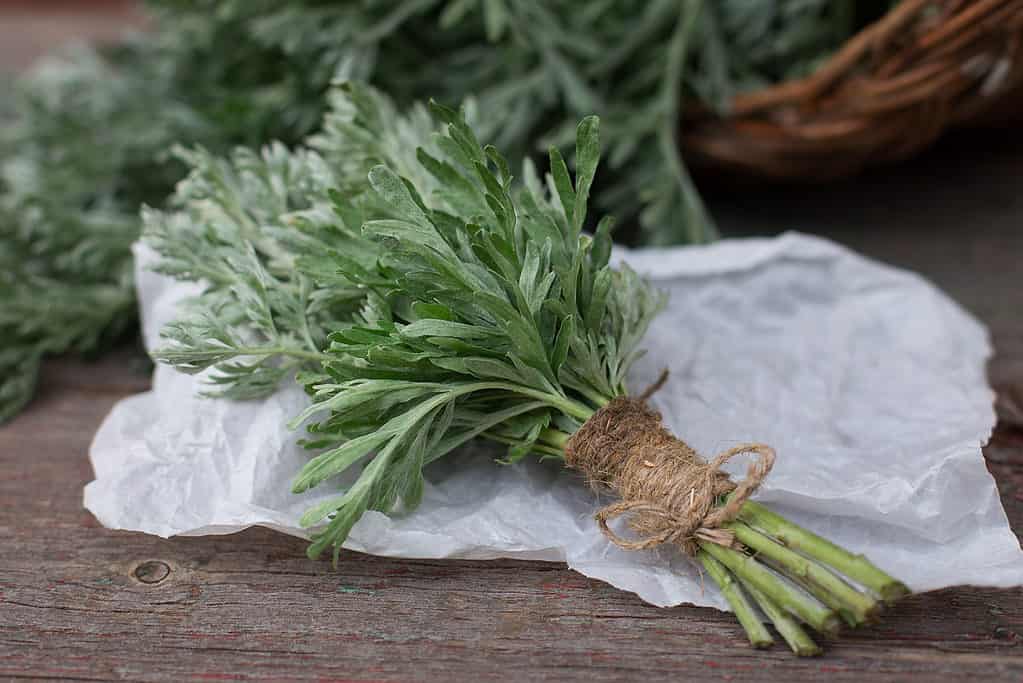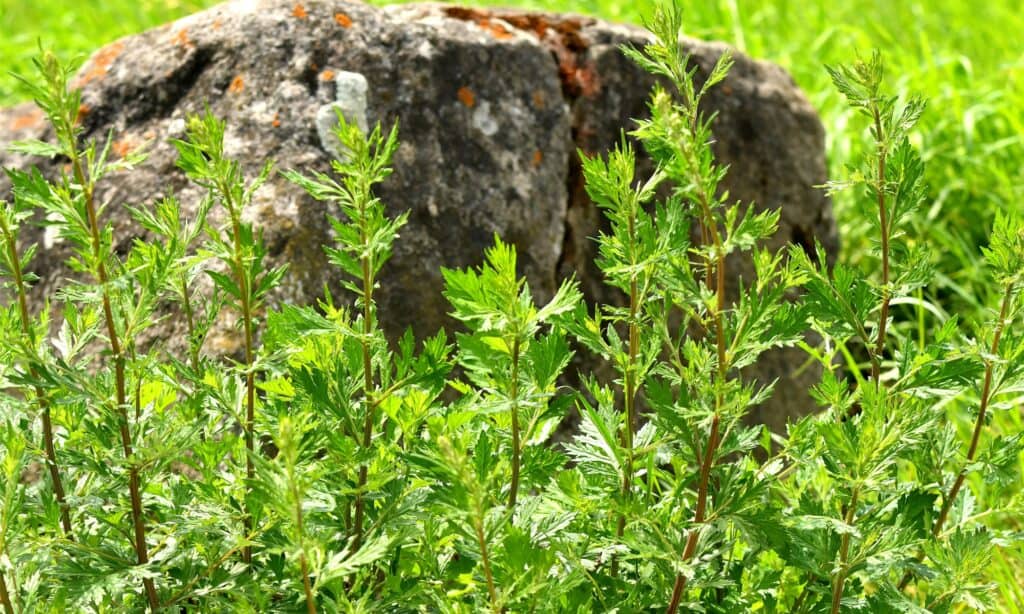Many people get mugwort and motherwort confused, but these plants are very different in caring for them and using them medicinally. While both plants are used in modern and traditional medicine, they’re helpful for various ailments. So it’s essential to keep that in mind when choosing to use them as alternative medicine. Here are the differences between mugwort and motherwort.
Mugwort vs. Motherwort: What’s the Difference?
There are several places where mugwort and motherwort differ. Truthfully, there are likely more places where they’re different than where they’re the same. Both medicinal herbs have some evidence of therapeutic value, especially motherwort. However, outside of that, they’re very different.
What Is Motherwort?
Motherwort is a perennial plant with limited, anecdotal evidence of medicinal value. People report that motherwort can be used as an anti-inflammatory and antioxidant. Uses for motherwort have been traced to include using it to treat heart failure, symptoms of menopause, and high blood pressure. However, there is no concrete scientific evidence for these plant uses.
However, it’s crucial to mention that motherwort should not be taken by anyone who is currently pregnant or trying to become pregnant. Motherwort is known for stimulating the uterus, which can cause a miscarriage in pregnant people.
Many people consider motherwort to be a weed. So, if you’ve decided you don’t want this plant in your yard, identifying it to pull it out is crucial. Motherwort typically has tubular flowers that are pinkish to lavender and grow to be about 1/3” long. The plant leaves are lobed into three parts, and the plant’s lower leaves are large and may resemble maple leaves at first glance. It has a square stem since it’s part of the mint family, and the underside of the leaves may appear silvery. The plant is very hairy, and the hair of the plant can is observable with the naked eye.

There is limited evidence to corroborate the medicinal value of motherwort.
©weha/Shutterstock.com
What Is Mugwort?
Mugwort is another herb that is often mistaken for motherwort. Mugwort is often used in traditional medicine to treat digestive issues and high blood pressure. It is also used as a sedative, laxative, and liver tonic. In addition, mugwort lotion may be used to treat itching associated with hypertrophic scars. However, very little research has been done on using mugwort on people. So, these uses and accounts of medical significance are anecdotal at best.
Like motherwort, mugwort should not be taken by pregnant people or people intending to become pregnant. This is because mugwort can stimulate menstruation in people who menstruate and can induce a miscarriage in pregnant people.
Like motherwort, some people consider mugwort to be a weed. Identifying it can be crucial to ensuring that it doesn’t compete with the plants you’ve selected for your garden. Mugwort looks very similar to motherwort, but there are some essential and notable differences you’ll want to look out for if you’re using it for medicinal purposes instead.
Unlike motherwort plants, mugwort flowers are red or yellow and grow in clusters rather than lips. The leaves are green on top and white underneath and aren’t hairy like motherwort leaves. Instead, the leaves are pointed, deeply lobed, and have an aromatic scent evocative of rosemary or sage.

Much like motherwort, claims of the medicinal value of mugwort are anecdotal at best.
©vo_studio/Shutterstock.com
The Origin of Motherwort
Motherwort is an excellent choice for any herb garden, whether you subscribe to the medical claims about it or not, as it has a long and decorated history outside the United States. Motherwort is thought to have originated in central and northern Asia, from where it was spread to Europe in the 17th century. However, motherwort isn’t believed to have reached the Americas until the 19th century.

Motherwort’s origin traces from Asia, before it was spread to Europe in the 1600s.
©Lipatova Maryna/Shutterstock.com
The Origin of Mugwort
Mugwort is native to Europe and East Asia, where the plant has a decorated history in traditional medicine. It is thought to have been introduced to the Americas in the 16th century when Jesuit missionaries brought seeds from the Asias.

Mugwort was introduced to the Americas in the 1500s when Jesuit missionaries brought seeds to the area.
©iStock.com/HansJoachim
How to Care for Motherwort in Your Garden
One important thing to remember about growing motherwort in your garden is that the plant is considered invasive for a reason. This plant can quickly overgrow and compete with nearby plants if its growth is not maintained during propagation.
Motherwort is very easy to propagate as it’s hardy and easy to grow — most weeds and invasive plants are. Motherwort can easily be grown from seeds, transplants, or even in a pot indoors. It’s not a picky plant regarding where you grow it. You can kind of just stick it in the sun and water it, and it will propagate all on its own, which can be problematic with a plant that can grow to be over five feet tall.
The majority of propagation that you need to do as a gardener with motherwort is pruning and hacking back the plants to prevent them from spreading too far. These plants aren’t classified as invasive for no reason. They’ll overtake the rest of your garden in the blink of an eye if left alone for too long.
How to Care for Mugwort in Your Garden
Before planting mugwort, till the beds you intend to use and remove any rocks from the soil. This will help your mugwort plants grow big and strong. Ideally, the beds you use should have full sunlight and moist but well-draining soil. However, mugwort plants can tolerate a little bit of shade and drier soil if necessary. What they cannot tolerate, though, is wet soil. Therefore, keep your mugwort plants away from areas that get a lot of moisture, as this will kill the mugwort.
Final Thoughts
Mugwort and motherwort may look similar, but they’re very different plants. However, both plants should be taken care of appropriately since they can quickly spread and overtake your and your neighbors’ gardens. They’re invasive plants for a reason, and you should also take care to check the legality of growing these plants in your yard. Suppose your municipality has rules about growing invasive plants. In that case, they may have regulations regarding the growth and propagation of motherwort and mugwort.
The photo featured at the top of this post is ©
Sources
- National Center for Complementary and Integrative Health (NIH), Available here: https://www.nccih.nih.gov/health/mugwort
- Wikipedia, Available here: https://en.wikipedia.org/wiki/Leonurus_cardiaca
- Wikipedia, Available here: https://en.wikipedia.org/wiki/Leonurus_cardiaca
- WebMD, Available here: https://www.webmd.com/vitamins/ai/ingredientmono-126/motherwort
FAQs (Frequently Asked Questions)
Are motherwort and mugwort considered invasive?
Both motherwort and mugwort and considered to be invasive weeds.
What is motherwort used for in traditional medicine?
In traditional medicine, motherwort is used as an anti-inflammatory and antioxidant.
What is mugwort used for in traditional medicine?
Mugwort is used for digestive issues and high blood pressure in traditional medicine.
Where is motherwort originally grown?
Motherwort originates from central and northern Asia.
Where is mugwort originally grown?
Mugwort is originally grown in Europe and East Asia.
Thank you for reading! Have some feedback for us? Contact the AZ Animals editorial team.






